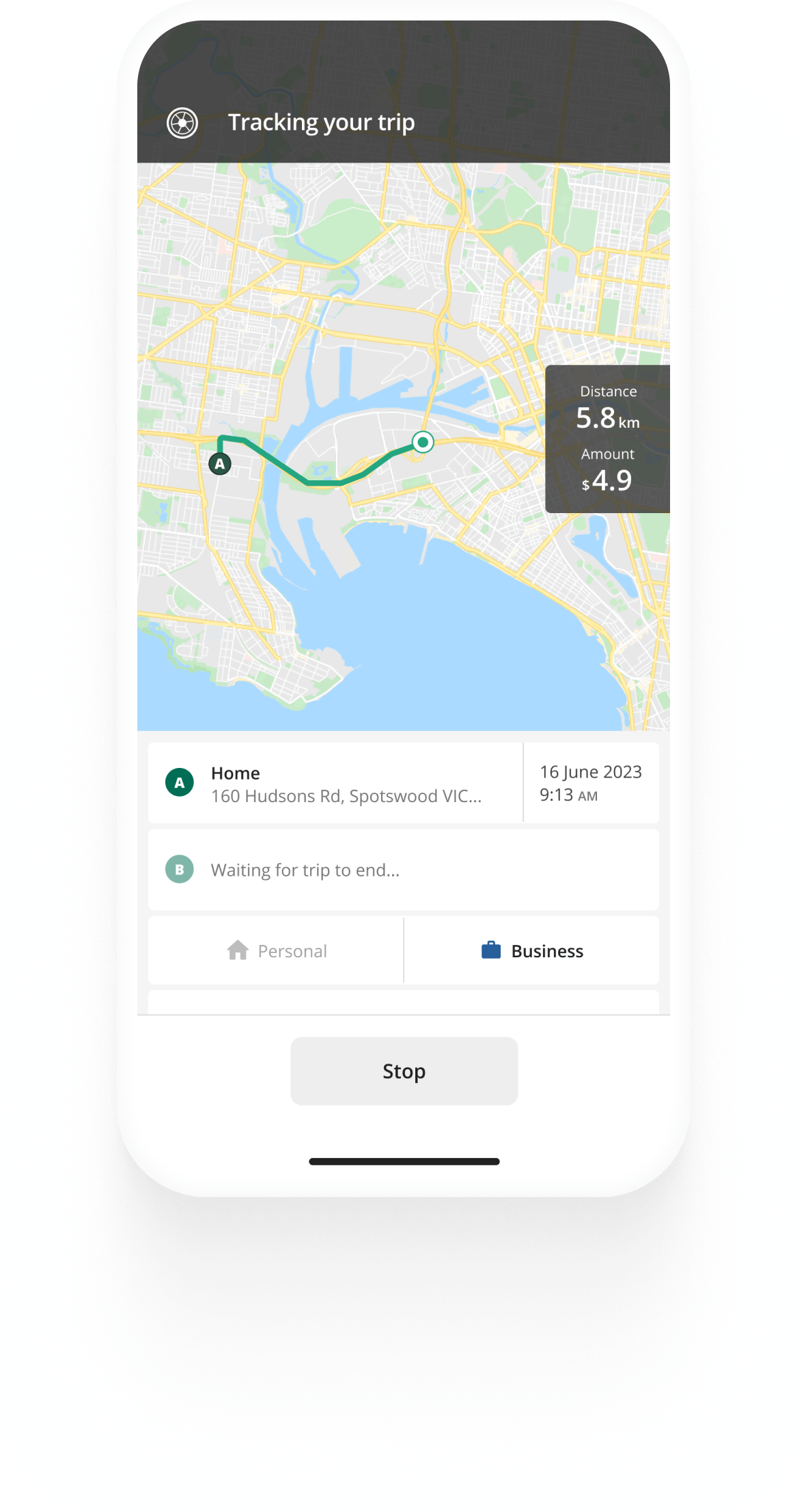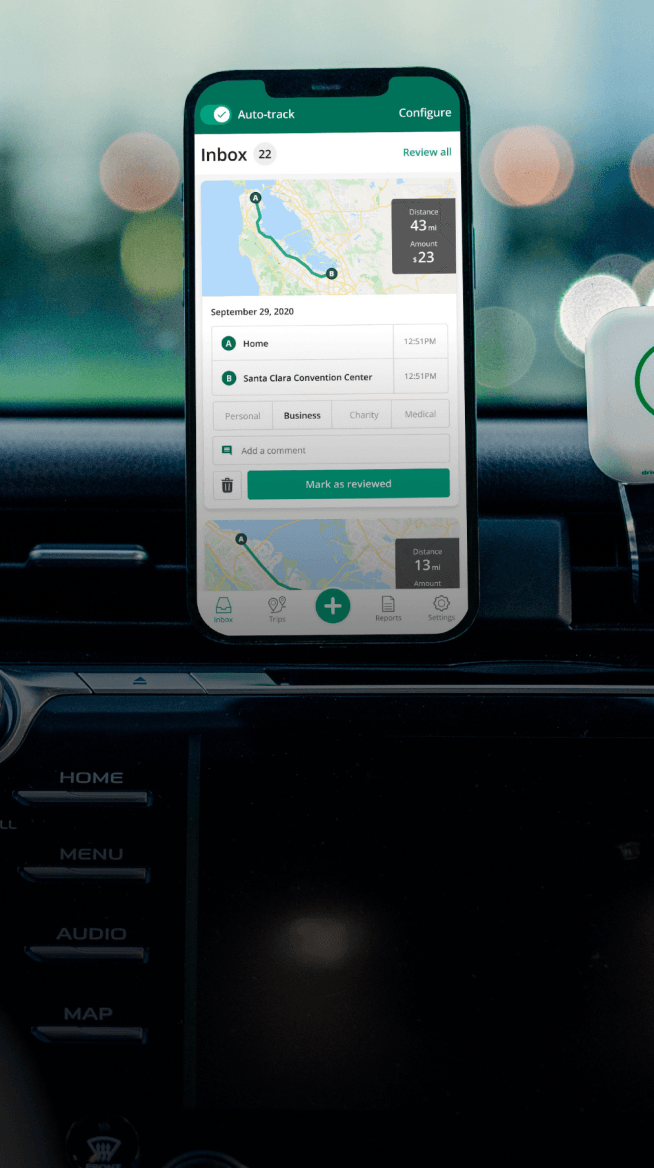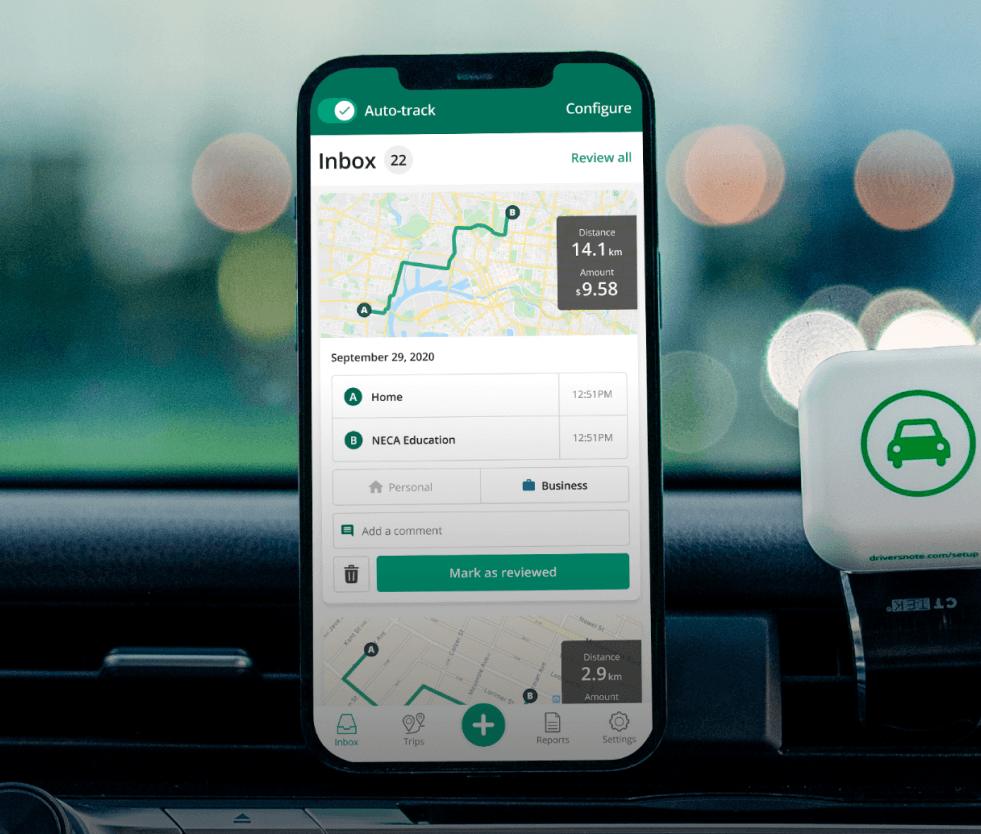Track mileage automatically
Get started.svg)
Company Vehicle Policy: Complete Guide & Downloadable Template
If you’re a business owner, an employer, or a fleet manager responsible for providing company vehicles to your employees, establishing a clear company car policy is an essential first step.
A well-written policy will outline the rules and responsibilities of both parties regarding the use of vehicles that you own or lease as a business. It ensures clarity between the company and the employer when it comes to matters such as vehicle insurance, personal use limitations, and maintenance obligations.
This article will guide you through the process of drafting a company car policy that stipulates regulations, limitations, and tax rules you should be aware of. We’ve also included a ready-made, company car policy template you can download and easily tailor to your unique business setup.
Also read: Mileage Reimbursement Rules for Employers
The benefits of setting up a company car policy
A well-crafted company car policy can help you:
- Manage liability and reduce risk
- Ensure compliance with the Australian Taxation Office (ATO), particularly regarding car Fringe Benefits Tax (FBT), which you may be liable for paying as the employer
- Avoid misunderstandings about personal vs business use
- Encourage responsible vehicle use
- Outline clear rules and obligations


Kilometre tracking made easy
Trusted by millions of drivers
Automate your logbook Automate your logbook

Automatic mileage tracking and ATO-compliant reporting.
Get started for free Get started for freeKey components of a company vehicle policy
The exact contents of a company vehicle policy will depend on the actual structure and size of your business, but there are some basic components you definitely want to have covered.
Eligibility criteria
Clearly define who among your employees is eligible for a company vehicle and list other eligibility criteria, such as:
- A valid driver’s licence
- A clean driving record
- Specific job roles or seniority levels
Permitted use and limitations
Explain what is and isn’t allowed, including:
- Basic driver obligations and limitations
- If the company car can only be used for business purposes, or for personal use as well? If so, to what extent? (Most companies permit personal use, as it’s often one of the most appealing perks to the employee)
- Potential use by family members or unauthorised individuals who aren’t employed by the company
- Longer travel, including personal long-distance road trips
Maintenance responsibilities
Usually, company vehicles fall fully under the care of the company, including necessary servicing and maintenance. It’s still important to outline in detail who handles things like:
- Scheduled service, maintenance, and tyre replacement
- Annual inspections of car roadworthiness
- Reporting of any breakdowns or malfunctions and handling the repairs
Vehicle running costs
Detail how additional fuel and vehicle expenses are covered, and the procedures around them, including:
- Fuel reimbursement policies
- Submitting receipts and odometer readings
- Charging policies for electric vehicles (EVs)
Liability and insurance
Clearly define the company car insurance rules, and stipulate what insurance the company provides. You should include:
- Compulsory Third Party (CTP) and comprehensive insurance coverage (non-collision damage caused by a third party, such as theft, vandalism, natural disasters, fire).
- Employee liability for any excessive and uninsured damages
Accidents, fines, and general misuse
Cover the procedure and responsibilities:
- Reporting accidents immediately
- Who pays for speeding/parking fines (it tends to be the employee’s expense)
- Potential policy violations and disciplinary measures that follow
Fringe Benefits Tax (FBT) obligations
Note that FBT rules would usually be determined separately to a vehicle policy. However, it's important for you as the employer to keep in mind the obligations if you permit personal use of a company car.
|
If you provide your employees with a company vehicle in addition to their salary (or instead of a portion of wages in the case of a salary sacrifice) and allow personal use, it’s considered a non-monetary perk, also known as a fringe benefit. In this instance, the company car may be subject to Fringe Benefits Tax (FBT). This tax is the employer’s liability, therefore you must pay it to the ATO. The current FBT rate is 47%. |
Before purchasing a fleet of company vehicles, you might also want to see what cars are exempt from FBT.
Also read: Electric car (EV) FBT exemption
Recordkeeping requirements
If you allow personal use of company vehicles, accurate, ATO-compliant recordkeeping is essential for FBT purposes. Tracking of business and personal drives is also essential for calculating any additional reimbursement you offer the employees, for fuel expenses for instance. The policy can list:
- The requirement of keeping a valid 12-week vehicle logbook for each car every 5 years (unless the driving pattern changes significantly) an ATO vehicle logbook template might be useful to share with your employees
- Who’s responsible for recording odometer readings at the start and end of each FBT year
- Rules on collecting receipts for fuel, servicing, insurance, and other running costs
Bring ease to your tracking with a digital logbook
Using digital tools like Driversnote for Teams can help automate company-wide trip tracking, categorisation, and reporting — saving time and reducing the risk of any manual errors among your team members.
With your company car fleet growing, the administrative tasks of calculating business usage and collecting odometer readings can become burdensome. Consider a digital vehicle logbook app for swift and easy tracking across your entire company.
Company car policy template to download (PDF, Google Docs)
Download this free company car policy template in either PDF or Google Docs format.
It’s ready for you to customise with your company data, and based on individual needs. Use it as a starting point and add or take away any information that’s irrelevant.
Tips on setting up a company vehicle policy that benefits both your business and employees
When considering what kind of company cars to provide and in what manner, choosing models that fall under the FBT exemption is the best place to start. It will largely reduce your tax liability as the employer.
Next, ensure employees are instructed to maintain their logbooks appropriately to demonstrate substantive business usage. If there isn’t significant use of the car for business purposes, then you won’t be able to claim any of the company car tax benefits or deductions.
Finally, ensure that the cost of owning the company car is of sufficient value to the business to warrant the outlay. If you have a small business with limited turnover and all your staff have expensive company vehicles, then the business may experience financial difficulties.
Also read: Car Allowance vs Company Car: What’s Best for Your Company?
Common risks and mistakes to avoid
When drafting a company car policy, pay special attention to covering the following areas in detail to avoid any issues and misunderstandings later on. This will also save you trouble in case of an ATO audit or when filing your FBT.
- Inaccurate split of business vs personal usage
- Inaccurate tracking of business kilometres in the 12-week period
- Overlooking necessary updates when laws or fleet size change
FAQ

Tired of logging mileage by hand?
Effortless. ATO-compliant. Liberating.
Top posts
Related posts
ATO Mileage Guide
Latest update: 23 June 2025 - 5 min read
Learn about the rules of reimbursing employees for their car expenses or deducting expenses as an employee or self-employed individual.
Sole Trader Tax Deductions: An Essential Guide
Latest update: 22 October 2025 - 5 min read
Maximise your income with our guide to sole trader tax deductions. Learn about deductible business expenses and how to claim them.
Cars Exempt from FBT
Latest update: 8 July 2025 - 5 min read
Types of cars exempt from Fringe Benefits Tax, together with exemption conditions and a list of popular models that qualify.

.svg)
